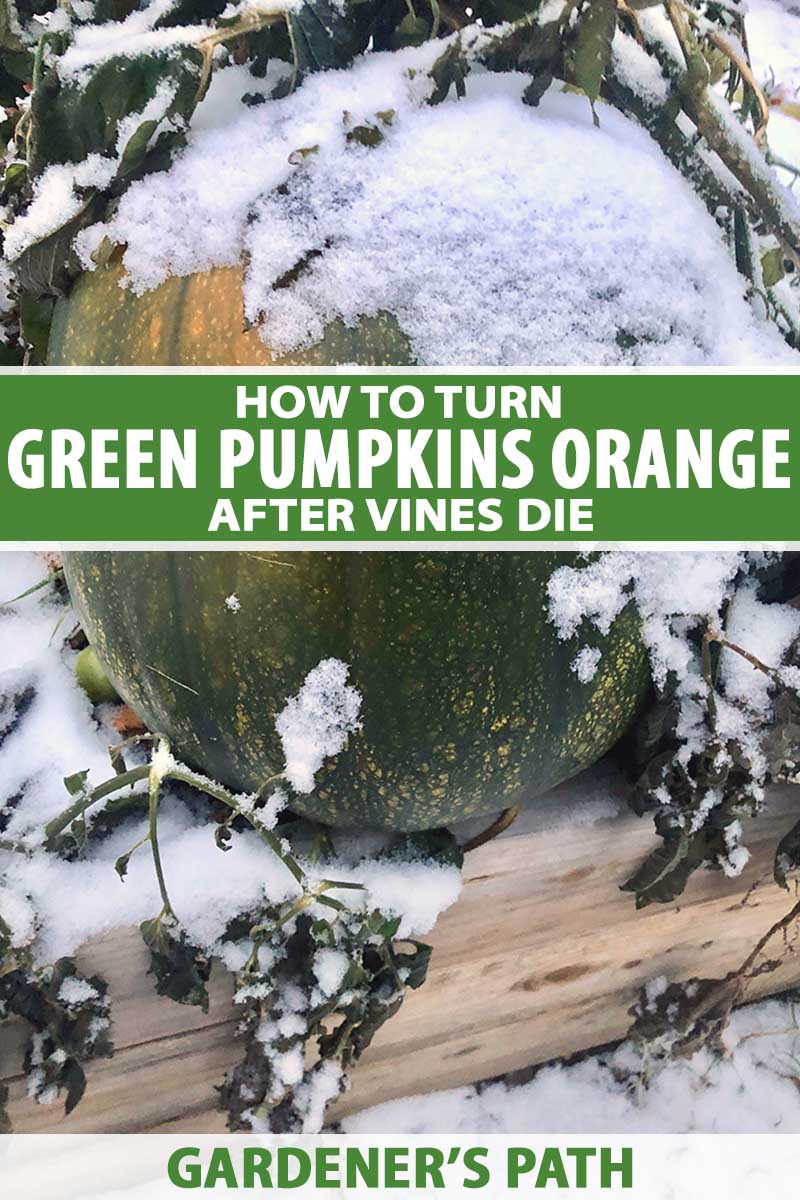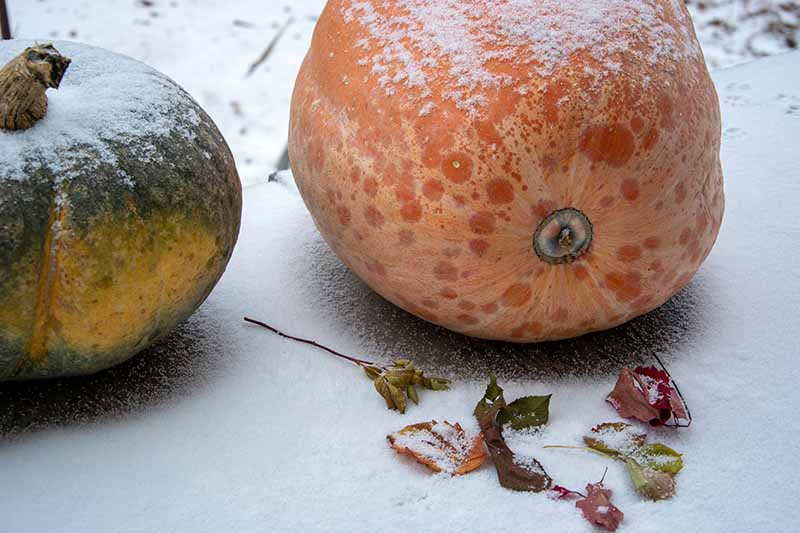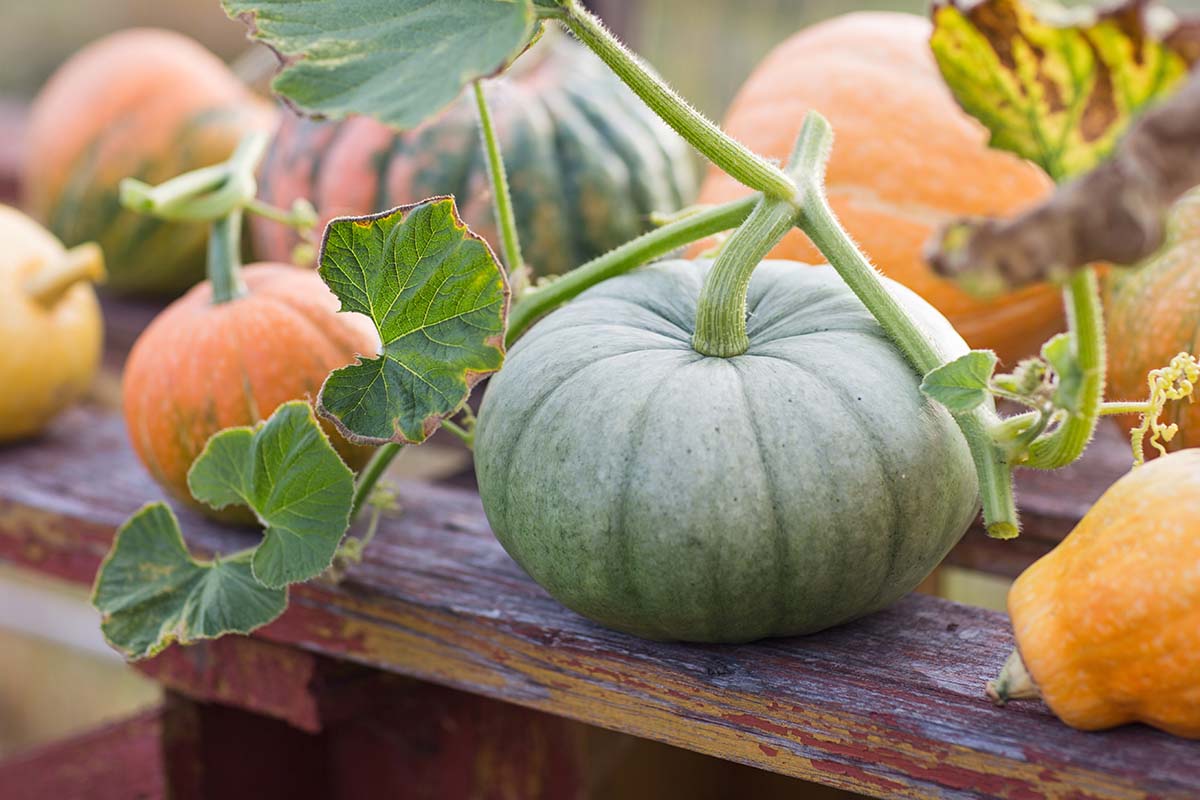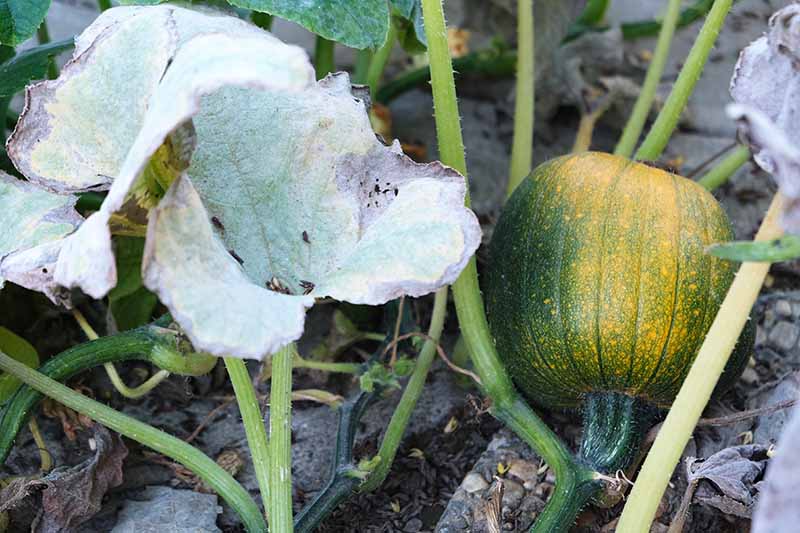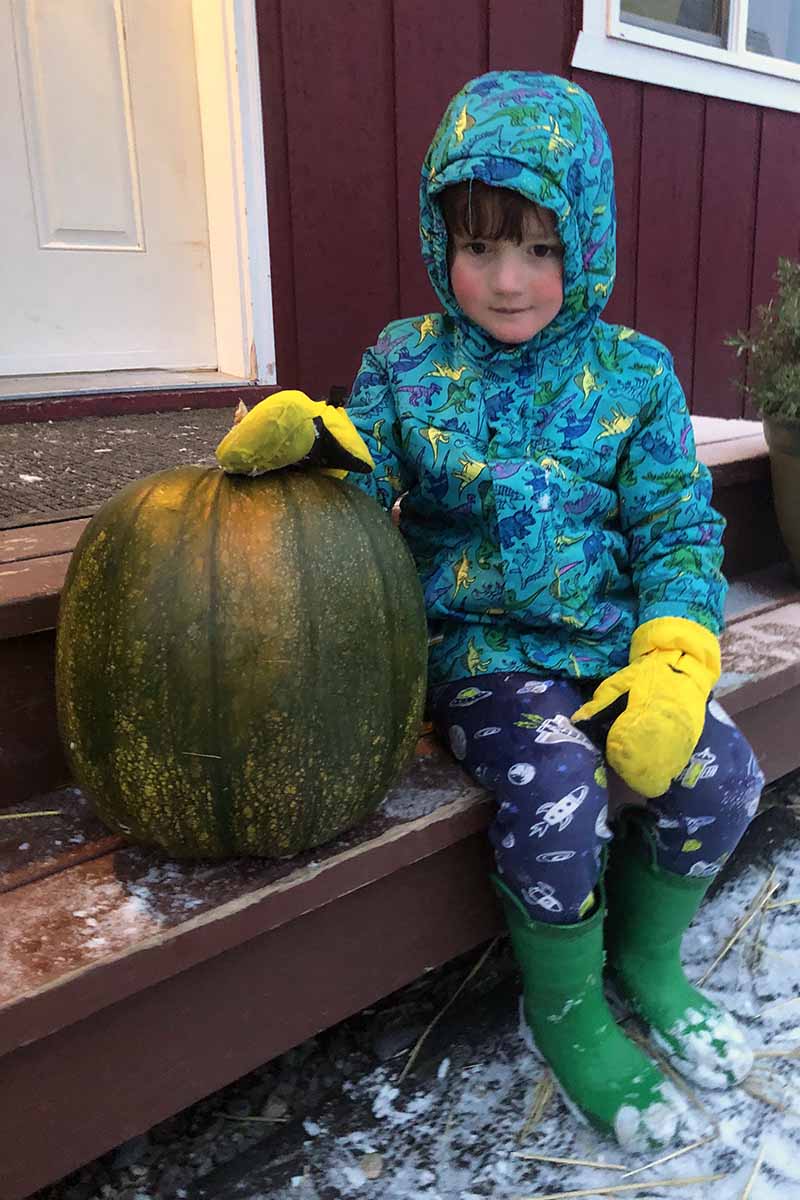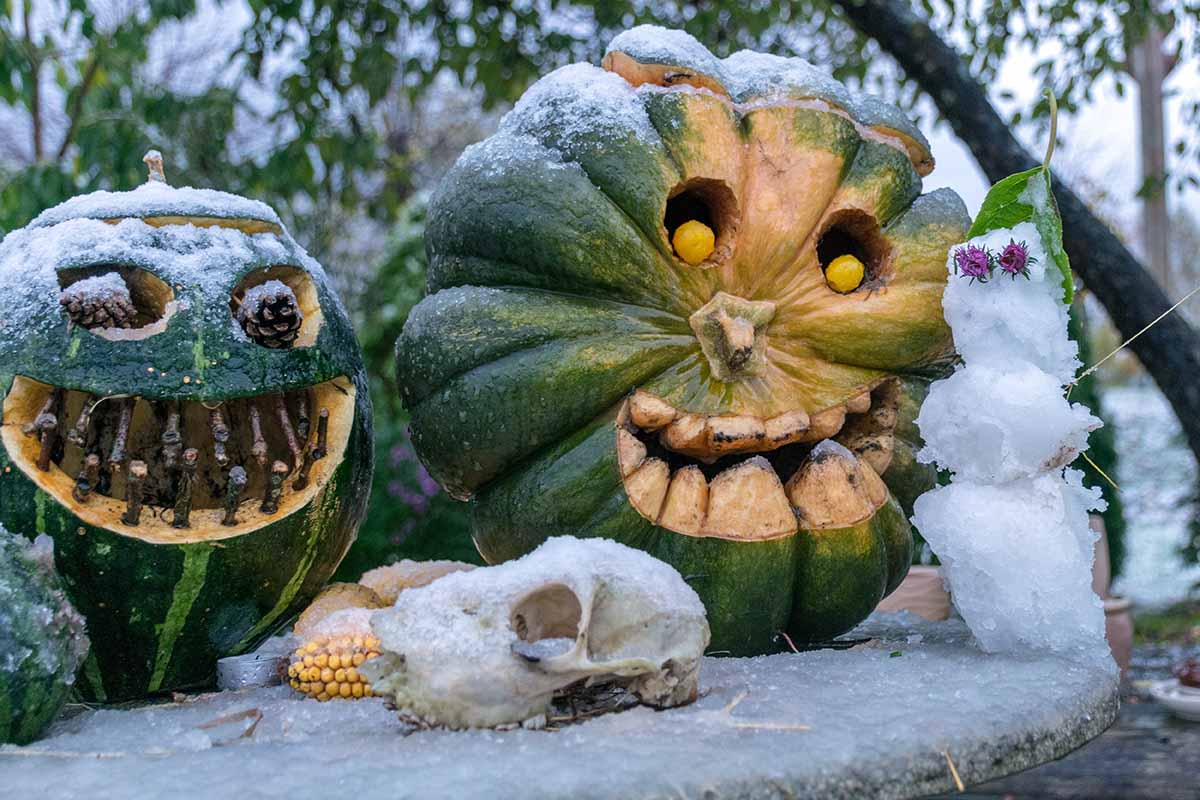Take this scenario, for example: You’ve been growing several gorgeous gourds on a strong, hardy vine, and they’re getting larger every day. You dream of making your own homegrown pumpkins into pie, or of carving your giant squash into the most delightful jack-o’-lanterns. But then, something terrible happens. Maybe it’s caused by an early frost, an extreme case of powdery mildew, or an energetic young helper in the garden who accidentally broke the vine. Whatever the reason, the life-giving vine dies, leaving your unripe gourd sitting pretty… and it’s pretty green. We link to vendors to help you find relevant products. If you buy from one of our links, we may earn a commission. We will show you how! If you’re looking for basic tips to grow your own pumpkins at home, read our guide. In this article, here’s what you’ll discover:
Why Did My Vine Die?
Let’s go into a bit more detail about the three main reasons why your vine may have died before the squash could turn orange. But first, a caveat: if the vine dies only halfway through the growing season, unfortunately there’s nothing you can do to coax the fruit to turn orange. This guide is for those late-season issues that can befall your plants, resulting in a nearly mature pumpkin that isn’t orange yet.
1. A Frost You Didn’t See Coming
Nothing hits your vines harder than a freeze of 32°F or lower. An early or unexpected frost can make gardeners despair – especially if they are growing pumpkins! According to Benjamin Phillips and Ronald Goldy, experts with the Michigan State University Extension, it’s best to plant seeds so that your fruits will be 50 percent mature at least one month before your area’s average first frost date. Let’s take south central Alaska, where I live, as an example. My area’s average last frost date falls on May 29, and the first frost date falls on September 11, meaning we have a short growing season of just over 100 days. Most pumpkins mature within 75 to 120 days, depending on the cultivar. If I wanted to grow a gourd that ripens in 100 days, I’d need to start seeds indoors six weeks before the average last frost date and transplant the seedlings out to the garden around June 12, two weeks after the last average frost date in the spring, just to be safe. Use your area’s average frost dates, along with the time to maturity as stated on your seed packet or online to calculate when you need to get your seedlings in the ground so the fruit can ripen on time. But say you planted them out a little too late or a frost came a little earlier than expected. What do you do? Well, here’s the good news: though a light freeze will kill the vine, it won’t hurt the squash. Anything below 28°F, on the other hand, can ruin the fruit, causing the skin to freeze and beginning the process of decay once it thaws. If frost or snow has arrived early in your region, it’s best to harvest your gourds right after that first vine-killing freeze happens. Take no chances with your precious pumpkins!
2. A Disease That Kills the Vine
Any time when you notice signs of disease on your gourd plants, such as wilting, white spots, or yellowing of the leaves – essentially, anything other than verdant leaves and vines, and robustly growing fruits – it’s time to take action. Keep an eye on the health of your plants, and try not to wait until it’s too late and they’re already dying! For help with figuring out what’s causing your plant to begin shriveling up or going limp, our guide to the reasons why your pumpkin plant is wilting can help. We also have a resource for those who are dealing with powdery mildew, a common disease which can plague gourds. Now, even though we want you to catch every malady before it gets too serious, we know this isn’t necessarily possible all the time. Life gets busy, and you might forget to check on your gourds every day, only discovering that a vine has died before you had a chance to try to fix the problem. Don’t beat yourself up about it!
3. A Broken Vine
Did you accidentally break the vine leading to one of your nearly mature pumpkins when you were weeding? Or maybe, while trimming the mass of vines, you inadvertently cut off one that led to your biggest, most prized gourd. Whatever the reason, a broken vine no longer offers any benefit to your gourd. But if the fruit is large and near maturity, even if it’s still green, you may just be able to help it to turn orange.
How to Turn Your Pumpkins Orange
Regardless of how the vine dies, the first thing to do when you notice a problem is to cut the gourd away from it. You don’t want the decaying vine to let in pests or diseases that can mess with your gourd’s health. Use a sharp, clean knife to cut the fruit off along with at least three to five inches of stem. Here’s the thing: you want your fruit to be warm. Somewhere between 80 and 85°F is ideal, and high temperatures will quicken the ripening process. Use a dry cloth to wipe your gourd clean. I like to use microfiber cleaning cloths like these, which are available from the Home Depot. Microfiber Cloths Now, you need to find a warm, sunny, dry spot for it. You can leave the unripened fruit outside on a sunny porch if your vines weren’t killed by frost – or in other words, if the weather is consistently well above 32°F overnight. If you have that type of weather outdoors, by all means, leave your gourd outside and turn it every day until the green parts are orange. But if the vine died because of an early frost, it’s probably going to be too cold to keep the fruit outside for too much longer. You may as well bring it inside where it’s dry and warm. Find a window in your home that lets in as much sunlight as possible – ideally at least six to eight hours a day. Use a chair or a stool to set your pumpkin up and turn the greenest part toward the sun. Rotate the squash every day until it turns orange. It can take several weeks for a green pumpkin to ripen, so don’t worry if it seems to be taking a long time. An added bonus of allowing your gourd to spend this time in the sun is that you’re also curing it, which we talk more about in our guide to harvesting these homegrown fruits. Once it’s orange, you can store it in a cool, dry area that’s around 50°F if you’re saving it to use for cooking. Or, use it as decoration in your home for a month or two – and then carve it up as your Halloween jack-o’-lantern. But guess what? Even a green gourd makes a fantastic jack-o’-lantern. Or, you can prepare it in recipes, using it as you would a mature pumpkin. Truly! The flavor and texture may not be as impressive as you’d like, but all hope is not lost. Have you ever had to deal with green pumpkins before? Let us know in the comments below, and send us any questions or stories, too! And before you go, check out our wealth of information about growing pumpkins next:
How to Hand-Pollinate Your Pumpkin PlantsHow to Grow Giant Pumpkins11 of the Best Pumpkin Varieties for CookingHow to Save Pumpkin Seeds to Plant in Your Garden
